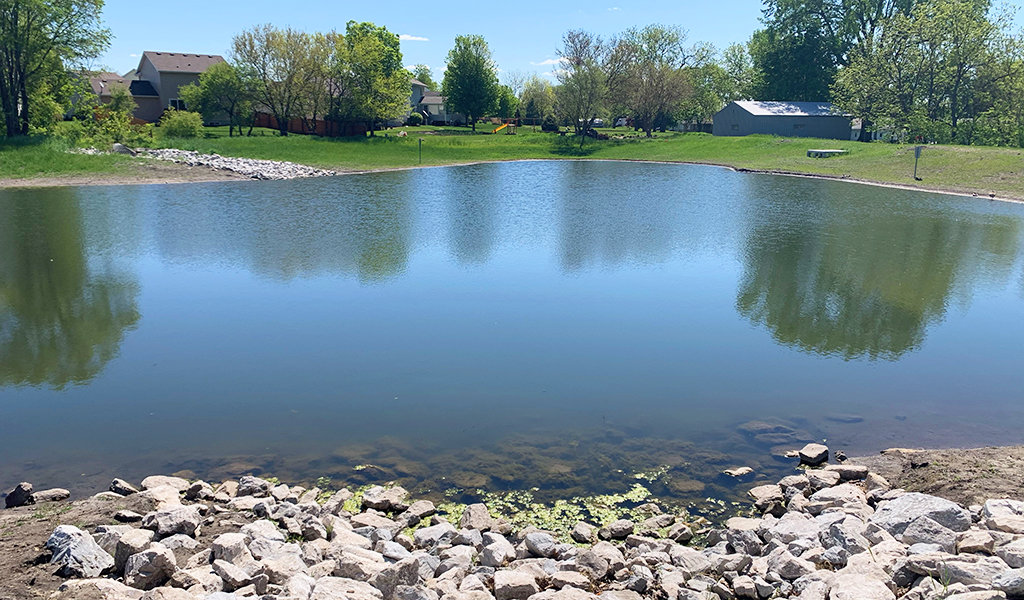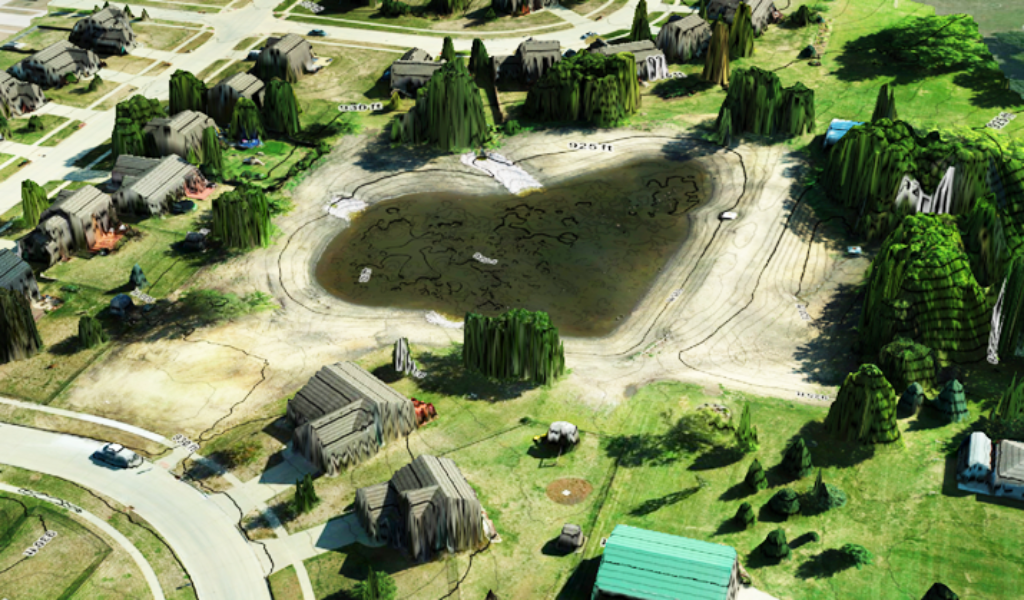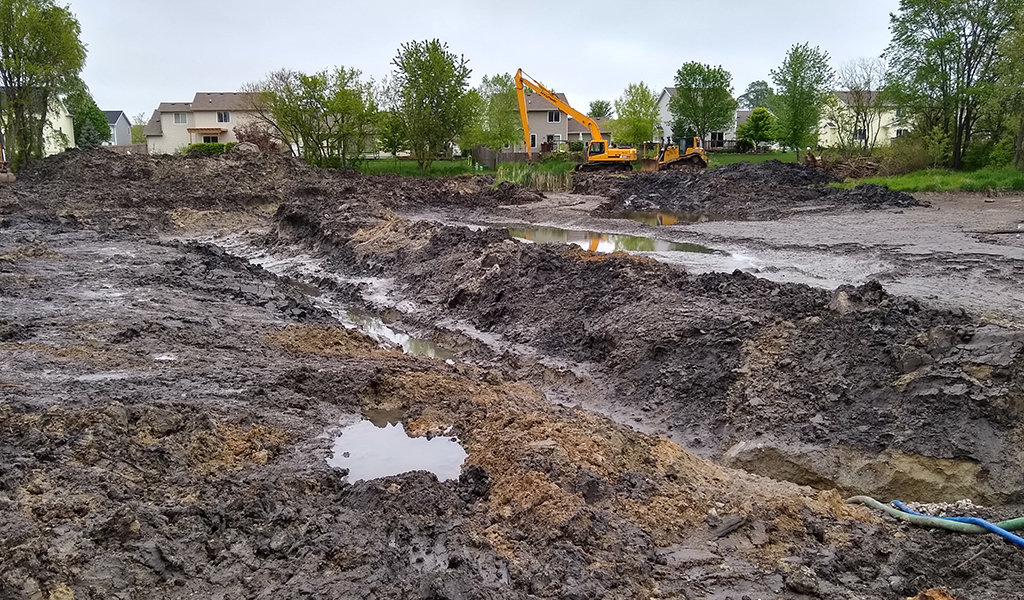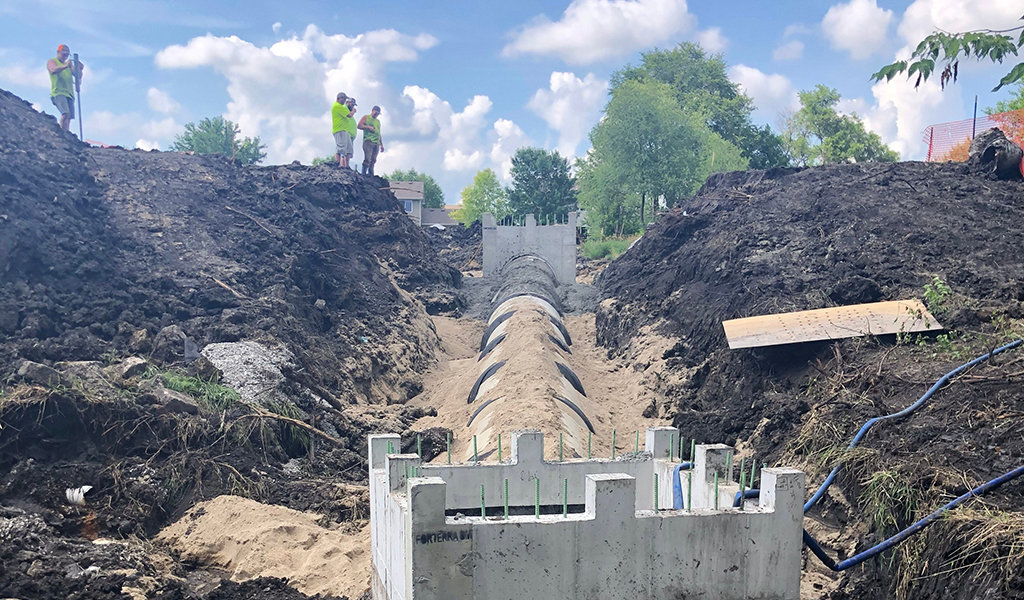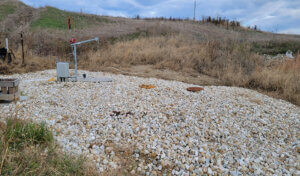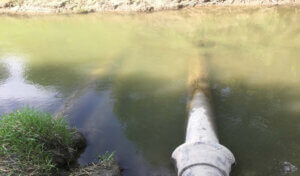
Development of Wildflower Pond Restoration Plan
Originally constructed in the 1940s, Wildflower Pond on the outskirts of Ankeny began its life on the edge of a vast, rural homestead. By the time residential and commercial development began to overtake the area in 2004, the pond had filled with sediment which dramatically decreased its size, reduced the water’s quality, and resulted in overflow concerns during heavy rainstorms. After more than a decade of economic expansion, the entire 85-acre watershed surrounding the pond was filled with thriving neighborhoods and new business locations. City of Ankeny leaders contracted Snyder & Associates to develop a pond restoration plan in an effort to return Wildflower Pond to its former glory.
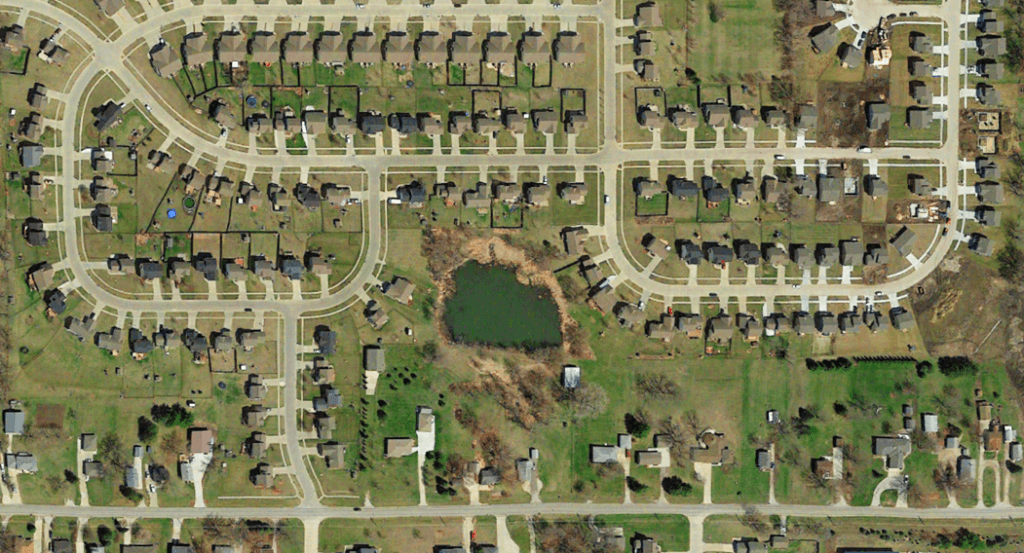
Wildflower Pond Post-Development
Pond Improvements Create New, Sustainable Habitats
Early hydrologic and hydraulic modeling performed by our team revealed two significant problems — the existing pond basin could not confine area stormwater runoff in the event of large rainstorms and the downstream system was not equipped to receive flows from a significantly larger outlet pipe. These two issues made it clear that our team would have to make the pond functional in addition to adding overflow structures.
Working carefully to avoid wetland impacts, the Snyder & Associates team increased the pond’s overall footprint and lowered the standing pool depth, expanding its total storage capacity. Increasing the pond’s depth from around two to three feet to a range of three to twelve feet also created new, sustainable habitats that can now house a variety of aquatic species.
While these changes successfully eliminated frequent overflows, the storage volume of the pond was now large enough that it surpassed the threshold requiring an Iowa Department of Natural Resources (DNR) dam permit. Our team worked with Iowa DNR Dam Safety Program engineers to analyze breach failure impacts, redesign the outlet structure, and add embankment drains. These substantial improvements greatly increased the dam’s safety and met all permitting requirements.
Incorporating Drone Modeling After Pond Restoration
Post-construction, the city requested a base map of its newly renovated pond to assist in future improvement planning. To meet this request, Snyder & Associates engineers enlisted the help of our survey team and their drone. These unmanned aerial vehicles (UAVs) provide invaluable insight with expansive views of project locations.
Flying nearly 200 feet above the pond, the drone took 123 aerial photos of the pond and its surrounding areas. Once the flight was complete, our team used software to stitch the images together and create a 360-degree interactive map. These maps are detailed, showing varying surface elevations and area features such as houses, trees, and fences. Thanks to drone technology, what would have previously taken multiple surveyors a full day to accomplish can now be completed by a single operator in under an hour — and in much greater detail. Snyder & Associates was proud to provide this unique deliverable and was met with positive feedback from our client.
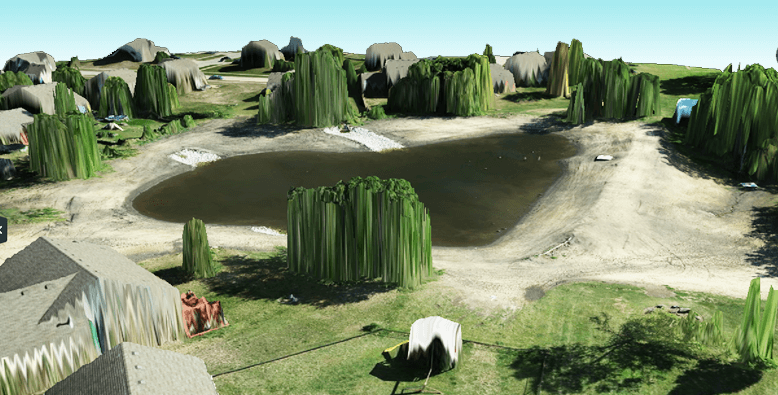
The finished product of many drone photos stitched together to create an immersive map.
What started as a small pond on a rural homestead has now been transformed into a vibrant recreational focal point for a growing residential area. Green spaces like Wildflower Pond are known to positively impact human health and are crucial in building community relationships. Walkable neighborhoods, parks, and open green areas draw people outside and foster social interactions. With future park and walking path improvements planned for the area by the city’s parks department, the restored pond is certain to be a feature attraction within this Ankeny neighborhood.
